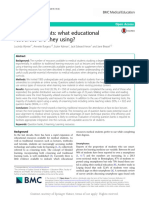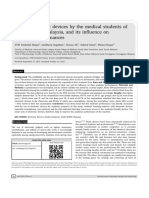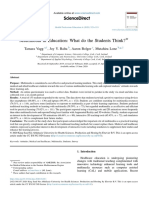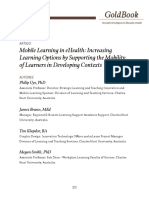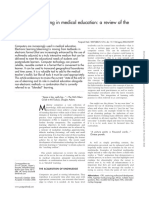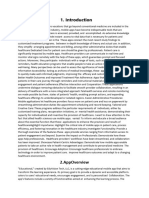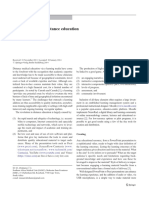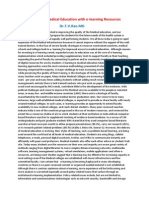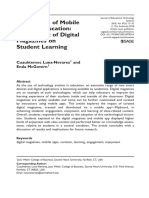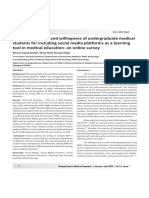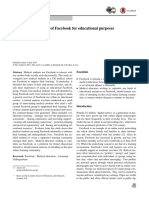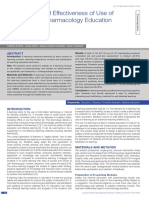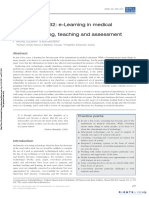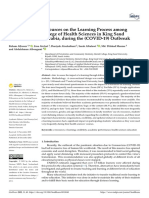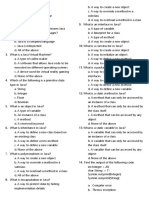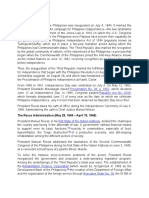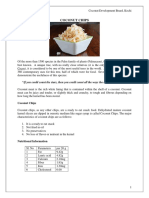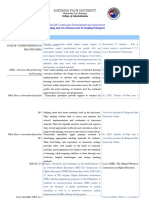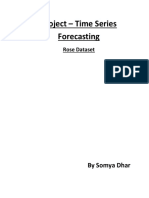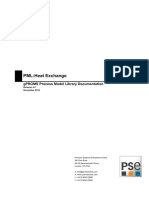0% found this document useful (0 votes)
6 views6 pagesMedj 3 322
The article assesses the use of smartphone applications in medical education, highlighting that 89% of medical students own smart devices and 98% use apps, with 85% utilizing them for learning purposes. The findings suggest a significant reliance on medical apps, which are considered useful by 93% of users, and indicate a demand for more comprehensive applications. Despite the prevalence of app usage, the evidence supporting their effectiveness in education remains limited, necessitating further research to address educational needs in this area.
Uploaded by
Farid GomaaCopyright
© © All Rights Reserved
We take content rights seriously. If you suspect this is your content, claim it here.
Available Formats
Download as PDF, TXT or read online on Scribd
0% found this document useful (0 votes)
6 views6 pagesMedj 3 322
The article assesses the use of smartphone applications in medical education, highlighting that 89% of medical students own smart devices and 98% use apps, with 85% utilizing them for learning purposes. The findings suggest a significant reliance on medical apps, which are considered useful by 93% of users, and indicate a demand for more comprehensive applications. Despite the prevalence of app usage, the evidence supporting their effectiveness in education remains limited, necessitating further research to address educational needs in this area.
Uploaded by
Farid GomaaCopyright
© © All Rights Reserved
We take content rights seriously. If you suspect this is your content, claim it here.
Available Formats
Download as PDF, TXT or read online on Scribd
/ 6




